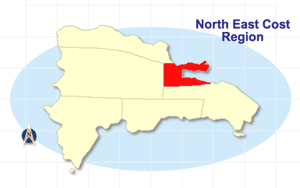|
|
|
|
|
 |
|
The Dominican Republic really does offer something for everyone. For those who dream of a one-on-one with Mother Nature, a visit to the Samana peninsula on the Northeast Coast is like pulling up a chair on her front porch.
Samana's beauty lies in her simplicity. Here, unspoiled beaches serve as a threshold to vibrant coral reefs while mountain waterfalls intersect lush rain forests. But while Samana is a top destination for eco-tourists and naturalists, some come to this off the beaten path peninsula to interact with humpback whales. After all, Samana is home to one of the largest and best breeding grounds in the world for this elusive mammal.
But while Samana's beauty is the stuff of legends, its history is fodder fit for a fairytale. Columbus stopped here on his discovery of the New World but the area didn't become populated until late in 1756 when people began migrating from the Canary Islands. Soon Samana became a lair for pirates who pillaged passing ships. What followed was a short ownership by Napolean Bonaparte and later, settlement by freed American slaves.
All this history and meshing of cultures has left Samana as one of the most impressive melting pots in the Dominican Republic. Americanos, descendents of the African-American inhabitants, mix with Europeans from France, Spain and Italy. Not only do people here look different from their Dominican brethren, but the food and even the language has a twist all its own.
|
|
|
|
|
|
|
|
|
|
|
|
|